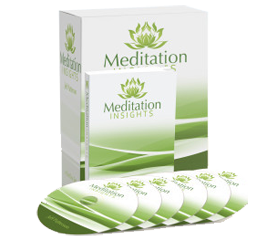Tai Chi for Alzheimer’s

Tai Chi for Alzheimer’s. There are many benefits that come from practicing the meditative arts. They range from reduced stress, increased focus, mental and emotional stability, peace of mind, higher levels of energy and the list goes on.
When I learned that you could also help prevent and cure the symptoms of Alzheimer’s by practicing tai chi I was a bit surprised. Not because I did not think it was possible, but because I have been involved with the practice for over 30 years and have never heard of it being used for this purpose.
Tai Chi for Alzheimer’s
Tai chi, qigong and meditation training involves deep breathing exercises. By practicing the many different breathing exercises you build healthy lungs that can be used more effectively.
Did you know that the average person uses only 20% of their lung capacity when at rest? When working out they use 50-60% when playing a brass instrument they can use as much as 80%. When practicing certain tai chi, qigong and meditation breathing exercises you can use up to 80-90% of their capacity.
If you are an inactive person and your lungs are not getting exercised they will start to become weak and brittle. It is so important to keep your lungs healthy so you can be strong and energetic well in to old age.
What does this have to do with Alzheimer’s?
If you have Alzheimer’s and you increase your oxygen it will help bring back your memory. If you are in the early stages of Alzheimer’s you can slow down and even reverse the effects of the disease.
Study at UCLA showed how oxygen levels changed the effects that Alzheimer’s had on test patients. They took Alzheimer’s patients put them in an oxygen chamber and on average they gained 30% of their memory back.
This is amazing. So by increasing their oxygen levels the brain reversed some of the effects caused by their disease.
In this article I am going to teach you three different breathing methods that you can practice to exercise your lungs and increase the oxygen levels in your body.

1- Lung conditioning
This is a simple practice that will help you to target all areas of the lungs to help them become healthier and more flexible.
First we will focus on the front sides of the lungs. This is where many of us spend 90% of our energy when breathing. If you sit at a computer or do a lot of deskwork you will already be doing this for a good part of your day. That is why it is important to make a conscious effort to exercise other areas of your lungs as well.
When working with this strategy you want to softly round the spine and shoulders forward. By doing this you are relaxing the front sides of the lungs so now when you breath deeply they will expand and contract effortlessly. Remain in this position and do 10-30 deep full breaths.
Next to stimulate the backside of the lungs we will do the opposite arch the back as you roll the shoulders backwards. Then again breath deeply in to the back side of the lungs for about the same repetitions.
Lastly to exercise the sides of the lungs lean over to one side relaxing that side of your body and breathe deeply in to that area the repeat on the other side.
This practice will start to open up areas of the lungs you may not be utilizing to their potential.
 2- The Quicky
2- The Quicky
This next technique we will look at is one I call the quickie. I have been using this strategy many years and have taught it to hundreds of students. It is one of my favorite active meditations because it is easy to use anywhere you are and it will give you immediate results.
The reason this technique is so successful is that you don’t need to set aside an hour to practice or reserve a time in your calendar. It can be done in as little as 3-5 minutes.
All you need to do is find your self in a relaxed state of mind. You can be standing, sitting, laying down or even walking.
Once you have let go of the physical tension in the body start to breath deeply. Take in as much air as you can comfortably with out letting yourself get tight then exhale and relax.
Count your breaths and for lung conditioning try to do at least 30-50 breaths. If you like you can count up to a 100 breaths do what your time allows.
Try to practice this Quickie technique as much as possible throughout your day 3,5 10 times is good.
By practicing this technique you will not only see your lung health improve you will also experience other benefits as well. Experiencing immediate results from this practice by becoming more relaxed and focused, increasing your awareness and your meditation sessions will be deeper and more profound because of this simple exercise.
 3- Four count breathing
3- Four count breathing
This qigong breathing set can be done a number of different ways I picked this one because it is a good starting point to get the idea of the pattern and connecting deeply with the breath.
While this breathing set can be used as a great centering reset it can also be used as a preparation for other ritual meditation practices. When using the practice for strengthening and conditioning you can use more aggressive variations of the set.
The four-count breathing can be done standing in a comfortable shoulder width stance or sitting keeping good erect alignment. Begin with the hands at your sides then inhale deeply as you pull your hands and palms upward using your breath to guide the movement until they reach your chest. Then turn the palms forward as you exhale pushing the hands forward keeping them chest high and about shoulder width until your arms are fully extended in front of you. As you exhale with a powerful exhale making the Haaaa sound with the breath by lightly closing off your throat and contracting the abdomen.
Then inhale pulling the hands back to the chest and exhale pushing downward back to the starting position. Again making the Haaaa sound and finish with your hands beside your hips. Then circle the hands continuing the flow inhale and repeat the flow.
Breath
As you are practicing the set on the inhale breaths you will stand up slowly but only extending the legs to about 98% extension. Never locking out the knees and on the exhale breaths sitting down an inch or two depending on your comfort. If your breath takes 6 seconds to inhale then it takes 6 seconds to move that inch with your legs the rising and lowering of the legs will never pause just as the breath will never pause. You will use this same coordination with the arm movements never pausing and following the breath.
As you do this practice slow down and listen internally to notice all of the subtle movements in the body. When you move the arms you want to softly use every muscle in the entire body and find a smooth connection to guide you through the movements.
Use these practices to help condition the lungs and experience the many benefits of the meditative arts. For more information on how to build a personalized meditation practice check out the Meditation Mastery Plan. There are many other free resources hear in this blog as well. If you have any questions about any of these practices please respond below.
Thank you


Comments on this post